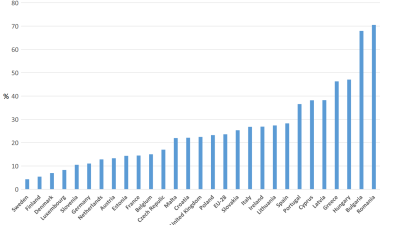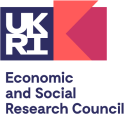Current policies are unlikely to meet child poverty targets, according to a summary of research projects by the Economic and Social Research Council, Child Poverty Casts A Long Shadow Over Social Mobility. This ESRC Evidence Briefing, one of a series on social mobility, provides a detailed summary of the findings of a number of current research projects on child poverty. The research consistently identifies significant detrimental outcomes for children living in poverty and key barriers to moving out of poverty.
Key findings
- A recent study reveals that by age five children from the poorest fifth of homes in the UK are already on average nearly a year behind when measured by their expected years of development.
- Poverty in and soon after childbirth is associated with a much higher risk of a low birth-weight, maternal depression in infancy and lower chances that the mother will try breastfeeding. All these are known to be associated with poor outcomes in the rest of childhood and in adulthood.
- Children growing up in poor families have lower educational attainment, have higher incidence of behavioural problems and risky behaviours and have the early signals of latter life health problems (for example, obesity) than children growing up in richer families.
- The barriers to moving out of poverty include employment, educational failure, poor health and family stability. Once these barriers are overcome, people are unlikely to slip back into poverty.
- Static measures of poverty or material deprivation are increasingly perceived to be inadequate tools for analysis and policy debate. Longitudinal measures of poverty are thus vital.
- Stable employment is another crucial determinant of mobility as it proves to be the main defence against poverty. For lone parents with young children, a barrier to moving out of poverty is often the lack of availability of good quality, affordable childcare.
- Public spending to deal with the effects of child poverty is some £12 billion a year, about 60 per cent of which is spent on personal social services, school education, and police and criminal justice.
- Changes in the earnings of the head of household from paid work account for the largest share of people moving out of poverty as well as moving into poverty.
- Researchers suggest that the targets set in the Child Poverty Act are extremely challenging and that it might be more productive to set realistic targets with concrete plans for achieving them.
The Evidence Briefing, Child Poverty Casts A Long Shadow Over Social Mobility, can be found on the ESRC website.



 PSE:UK is a major collaboration between the University of Bristol, Heriot-Watt University, The Open University, Queen's University Belfast, University of Glasgow and the University of York working with the National Centre for Social Research and the Northern Ireland Statistics and Research Agency. ESRC Grant RES-060-25-0052.
PSE:UK is a major collaboration between the University of Bristol, Heriot-Watt University, The Open University, Queen's University Belfast, University of Glasgow and the University of York working with the National Centre for Social Research and the Northern Ireland Statistics and Research Agency. ESRC Grant RES-060-25-0052.






